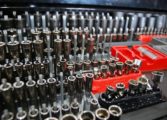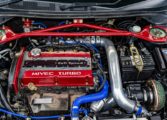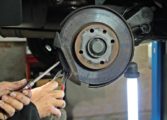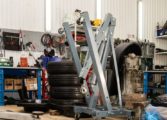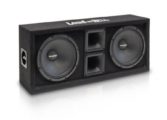Classic American Cars: Exploring the Iconic Gems on Wheels

Introduction
Classic American cars have long been revered for their timeless design, powerful engines, and significant contribution to automotive history. In this comprehensive article, we will delve into the world of classic American cars, providing an in-depth overview, an extensive presentation of their various types and popularity, quantitative measurements, a discussion on their differences, a historical analysis of advantages and disadvantages, and a focus on the crucial factors that car enthusiasts consider when making a purchase.
Overview of Classic American Cars

Classic American cars refer to vehicles that were manufactured in the United States between the 1920s and 1970s, a golden era of automotive excellence. These cars were built with meticulous craftsmanship and boasted elegant designs that have stood the test of time. From iconic brands like Ford, Chevrolet, and Cadillac, these automobiles are synonymous with American culture.
Types and Popularity of Classic American Cars
Classic American cars can be broadly categorized into various types, each with its own charm and significance. From sleek and sporty muscle cars to luxurious and elegant cruisers, there is a classic American car to suit every taste. Some popular types include pony cars like the Ford Mustang and Chevrolet Camaro, vintage muscle cars like the Dodge Charger and Plymouth Road Runner, and iconic luxury cars like the Cadillac Eldorado and Lincoln Continental.
Quantitative Measurements of Classic American Cars
When it comes to classic American cars, enthusiasts often measure their performance using different metrics. Horsepower, torque, and acceleration are key indicators of their power and speed capabilities. Additionally, fuel efficiency, measured in miles per gallon, provides insights into their economic viability. It is noteworthy that classic American cars may not offer the same fuel efficiency as modern vehicles, but they compensate with sheer exhilaration and nostalgia-inducing experiences.
Differences Between Classic American Cars
Despite belonging to the same era, classic American cars exhibit distinct characteristics that set them apart. Factors such as body style, engine type, and design philosophy contribute to these differences. For example, muscle cars are known for their high-performance engines and aggressive styling, while luxury cars prioritize comfort and sophistication.
Historical Analysis of Advantages and Disadvantages
Classic American cars have both advantages and disadvantages that have evolved over time. One notable advantage is their durability and timeless aesthetic appeal. These cars were built with high-quality materials and intricate attention to detail, resulting in vehicles that can still turn heads decades later. However, their age can also pose challenges in terms of maintenance and finding compatible spare parts. Additionally, their fuel consumption may not align with modern environmental concerns.
Crucial Factors for Car Enthusiasts in Purchasing Classic American Cars
For car enthusiasts, several factors play a pivotal role in the decision-making process. Firstly, the car’s condition is of utmost importance, with enthusiasts seeking well-maintained, authentic vehicles. The rarity and historical significance of a particular model also contribute to its desirability. Furthermore, customization potential and the availability of aftermarket parts are essential considerations for those looking to personalize their classic American car.
[INSERT VIDEO(S) HERE]
Conclusion
Classic American cars embody the epitome of automotive passion and heritage. With their timeless appeal, unmatched performance, and illustrious history, they continue to captivate the hearts of car enthusiasts worldwide. Whether you’re drawn to the raw power of a muscle car or the elegance of a luxury cruiser, classic American cars offer an unrivaled driving experience. By understanding their different types, measurements, and characteristics, as well as the historical context and decision-making factors, enthusiasts can make informed choices that ensure the preservation and enjoyment of these remarkable vehicles for years to come.





